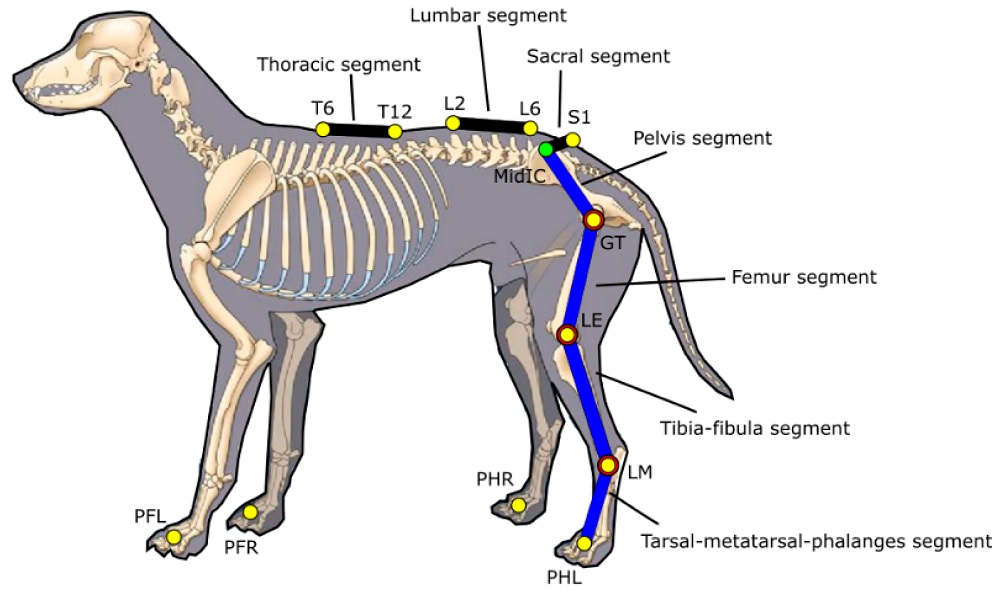Yes, dogs can get scoliosis, a condition in which the spine curves abnormally. While it’s not common, it can occur in any breed of dog.
Symptoms include a hunched back, uneven shoulders, and difficulty moving. If your dog shows any of these signs, take them to the vet for an evaluation.
Scoliosis is usually treated with pain medication and physical therapy. In severe cases, surgery may be necessary to correct the problem.

How Do I Know If My Dog Has Scoliosis?
Detecting scoliosis in dogs can be challenging, as dogs can’t verbally communicate their discomfort or pain. However, there are some signs and symptoms that you can look out for to determine if your dog might have scoliosis.
Keep in mind that if you suspect your dog has scoliosis, it’s important to consult a veterinarian for a proper diagnosis and treatment plan. Here are some signs to watch for:
Asymmetrical Appearance: Observe your dog’s body for any differences in shoulder or hip height, which can indicate spinal misalignment.
Abnormal Posture: Look at your dog from different angles to see if their spine appears curved or twisted. An uneven backline or an “S” or “C” shape to their spine can indicate scoliosis.
Difficulty Moving: If your dog has difficulty walking, running, or seems to have stiffness, it could be due to an abnormal spine curvature.
Limping: Scoliosis might lead to changes in your dog’s gait, resulting in a noticeable limp.
Pain or Discomfort: Dogs with scoliosis may show signs of pain or discomfort. This could manifest as difficulty getting up or lying down, reluctance to engage in physical activities, or even whining or whimpering.
Muscle Atrophy: If scoliosis is affecting your dog’s nerves, you might notice muscle wasting or atrophy on one side of their body.
Behavioral Changes: Dogs in pain might exhibit behavioral changes such as increased irritability, restlessness, or decreased appetite.
Visible Ribs or Flank: The curvature of the spine can cause one side of the ribcage to protrude more than the other, leading to visible changes in the dog’s flank area.
Why is My Dog’s Spine Curving?
There are a few reasons your dog’s spine may be curving. One reason is that your dog may have a condition called lordosis, which is when the vertebrae in the spine curve inward.
This can be caused by obesity, muscle weakness, or even tightness in the muscles and ligaments around the spine. Another reason for a curved spine is scoliosis, which is when the vertebrae curve to the side. This can be caused by birth defects, trauma, or nerve damage.
If you notice your dog’s spine beginning to curve, it’s important to take them to the vet so they can determine the cause and begin treatment.
Can Animals Get Scoliosis?
Yes, animals can get scoliosis. In fact, scoliosis is a relatively common condition in animals, particularly in dogs and cats. While the exact cause of scoliosis is unknown, it is believed to be due to a combination of genetic and environmental factors.
Animals with scoliosis often have an abnormal curvature of the spine, which can lead to pain and mobility problems. Treatment for scoliosis typically involves surgery to correct the spinal deformity.
How Do I Know If My Dog Has Spine Problems?
If your dog is having trouble walking, sits down frequently, has a loss of appetite or energy, or is in pain, he may have spine problems. Fortunately, there are a number of ways to diagnose spinal problems in dogs.
X-rays are the most common way to diagnose spinal problems. An x-ray can show if there is any damage to the bones in the spine, as well as any potential tumors.
If your dog has had an injury, an x-ray can also show if there are any broken bones. An MRI (magnetic resonance imaging) may also be used to diagnose spine problems. An MRI can provide more detailed images than an x-ray and can show soft tissue abnormalities.
MRIs are often used when cancer is suspected. CT (computed tomography) scans may also be used to diagnose spine problems. A CT scan provides even more detailed images than an MRI and can show small fractures not visible on other types of images.
CT scans are often used when surgery is being considered. Once spinal problems have been diagnosed, treatment options can be discussed with your veterinarian. Treatment options will vary depending on the cause of the problem and how severe it is.
How Long Do Dogs With Scoliosis Live?
While there is no definitive answer to this question, as each dog’s situation is unique, the general consensus is that dogs with scoliosis generally have a normal life expectancy.
This condition does not typically cause pain or other symptoms and therefore does not impact a dog’s quality of life.
However, scoliosis may be indicative of another underlying health condition, such as hip dysplasia or arthritis, which could potentially shorten a dog’s lifespan.
Overall, though, most dogs with scoliosis live happy and healthy lives.
Conclusion
Yes, dogs can get scoliosis, a condition in which the spine is curved to the side. While it’s not common, it can occur in any breed of dog.
If your dog has scoliosis, you may notice that their back is hunched or that their head is tilted to one side. They may also have difficulty walking or running. If you think your dog has scoliosis, take them to the vet for an evaluation.